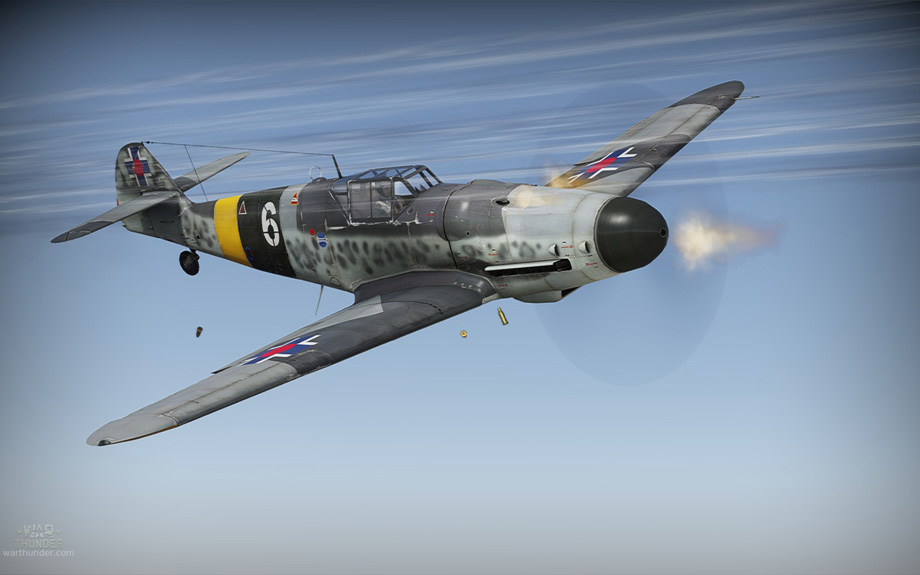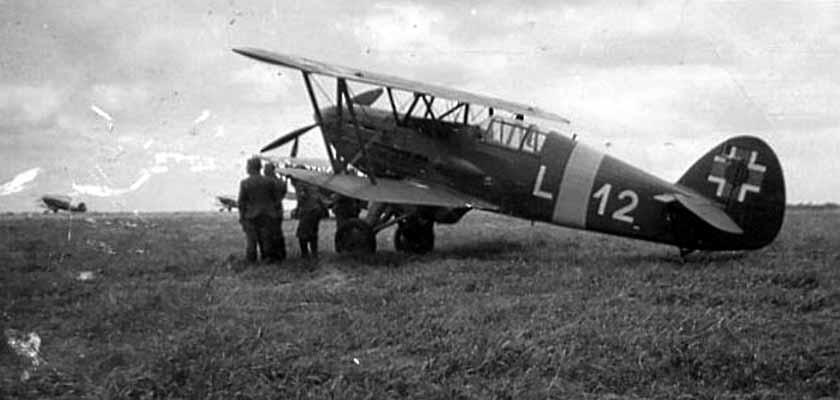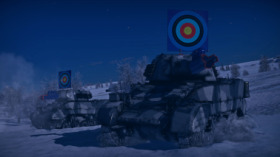
- For PC
- For MAC
- For Linux
- OS: Windows 10 (64 bit)
- Processor: Dual-Core 2.2 GHz
- Memory: 4GB
- Video Card: DirectX 11 level video card: AMD Radeon 77XX / NVIDIA GeForce GTX 660. The minimum supported resolution for the game is 720p.
- Network: Broadband Internet connection
- Hard Drive: 23.1 GB (Minimal client)
- OS: Windows 10/11 (64 bit)
- Processor: Intel Core i5 or Ryzen 5 3600 and better
- Memory: 16 GB and more
- Video Card: DirectX 11 level video card or higher and drivers: Nvidia GeForce 1060 and higher, Radeon RX 570 and higher
- Network: Broadband Internet connection
- Hard Drive: 75.9 GB (Full client)
- OS: Mac OS Big Sur 11.0 or newer
- Processor: Core i5, minimum 2.2GHz (Intel Xeon is not supported)
- Memory: 6 GB
- Video Card: Intel Iris Pro 5200 (Mac), or analog from AMD/Nvidia for Mac. Minimum supported resolution for the game is 720p with Metal support.
- Network: Broadband Internet connection
- Hard Drive: 22.1 GB (Minimal client)
- OS: Mac OS Big Sur 11.0 or newer
- Processor: Core i7 (Intel Xeon is not supported)
- Memory: 8 GB
- Video Card: Radeon Vega II or higher with Metal support.
- Network: Broadband Internet connection
- Hard Drive: 62.2 GB (Full client)
- OS: Most modern 64bit Linux distributions
- Processor: Dual-Core 2.4 GHz
- Memory: 4 GB
- Video Card: NVIDIA 660 with latest proprietary drivers (not older than 6 months) / similar AMD with latest proprietary drivers (not older than 6 months; the minimum supported resolution for the game is 720p) with Vulkan support.
- Network: Broadband Internet connection
- Hard Drive: 22.1 GB (Minimal client)
- OS: Ubuntu 20.04 64bit
- Processor: Intel Core i7
- Memory: 16 GB
- Video Card: NVIDIA 1060 with latest proprietary drivers (not older than 6 months) / similar AMD (Radeon RX 570) with latest proprietary drivers (not older than 6 months) with Vulkan support.
- Network: Broadband Internet connection
- Hard Drive: 62.2 GB (Full client)

Bf 109G-6, White 6, Letka 13, Slovak Air Force, W.Nr. 161 717, pilot P. Zelenak 1944, skin made by Paegas | download here
This Bf 109 was damaged at forced landing after the attack on US B-24 on June 26, 1944.
In March 1939, when Czechoslovakia ceased to exist and was occupied by Wehrmacht, Czechoslovakian air force consisted from six aviation regiments. Only one of them, though, was located in Slovakia – Aviation Regiment 3, bearing name of Aviation General Milan Rastislav Štefánik.
On 13th March 1939, Adolf Hitler met with representatives of Slovakia, Jozef Tiso and Ferdinand Ďurčanský in Berlin. Führer’s plan was to eliminate Czechoslovakia, and to achieve this goal, he decided to use Slovaks. In exchange for breaking the Czechoslovakian state from within, Hitler offered creation of independent Slovakia and threatened Tiso and Ďurčanský, that in case of refusal, Slovakia would be divided between Hungary and Poland. Tiso and Ďurčanský agreed with this proposal and on 14th March, the very next day, independent Slovenský štát („Slovakian State“) was formed.
 |
| Bf 109 G-2-R6 |
Mentioned Aviation Regiment 3 was then used as a basis for new Slovakian air force, named Slovenské vzdušné zbraně (SVZ, translated into „Slovakian Aerial Weapons“). When created, SVZ was in possession of about 220 planes of former Czechoslovakian origin. Backbone of fighter squadrons were Avia B.534 biplane fighters, while reconaissance squadrons were equipped with light reconaissance biplane Letov Š-328 able to fulfill duties of light bomber and attacker if needed.
First combat engagement of SVZ was during border skirmishes with Hungary on the second half of March 1939, during which SVZ lost nine Avia B.534 fighters and two Š-328 planes, either in dogfight or in bombing missions. Next area of operation for Slovakian pilots was Poland, where Slovaks usually escorted German Junkers Ju 87 Stuka dive bombers during attacks on Polish railway network, or protected Slovakian airspace against occasional Polish intruders. On 6th September 1939, SVZ achieved it’s first confirmed air kill, when section of Avia B.534’s managed to shoot down Polish Lublin R-XIII recon plane.
On 22nd June 1941, when Germany launched full-scale invasion into USSR, Slovakian aviators assisted Luftwaffe. On Eastern front, two fighter squadrons (squadrons 12 and 13) of B.534’s and three reconaissance and observation squadrons (squadrons 1,2,3) were relocated to Ukraine, where they acted as air support for Slovakian ground forces. Combat losses and attrition took their toll, though, and squadrons were eventually withdrawn from area of operations back into Slovakia, with last Slovakian aviators leaving Eastern front in August 1941. Heaviest battle of SVK there occured at the beginning of September 1941, where Squadron 12 was tasked by protection of important bridge over Dnieper River at Garnostaypol agains Soviet aviation. Slovakian pilots achieved three kills of Soviet Polikarpov I-16 fighters there.
 |
| Letov Š.328.13, Anapa 1943 |
In total, Slovaks took off to 2962 combat missions during Slovakian presence on Eastern front and lost only four pilots – one was killed by Soviet flak, and rest was lost because of crashes. SVZ returned back to East in summer of 1942 and despite Avia B.534’s and Š-328’s being very obsolete at that time, Slovakian aviators continued to provide air support for Auxiliary Division in attempt to eliminate Soviet partisans on Ukraine. After SVZ returned from USSR, both Slovak and German representatives agreed upon need of equipping SVZ with modern fighters to make it battle-ready again. 19 pilots were chosen for retraining to modern Messerschmitt Bf 109 E fighters in Grøve (Denmark) between February and July of 1942. Slovakian air force then purchased Bf 109 E fighters, which were assigned to 1st Frontline Garniture of 13rd Squadron to be used at the front.
By end of August 1942, Slovakian pilots flying on Bf 109 returned to frontlines. Their first base was Maykop airfield in Kuban area. Squadron 13 was then assigned under JG 52 and renamed as 13. (slow)/JG 52. In half of December, Germans loaned Bf 109 F-4 fighters to Slovaks, with which Slovakian pilots achieved first real successes. At the beginning of March 1943, 13. (slow.)/JG 52 unit was further modernized by receiving Bf 109 G-2’ and shortly after, Bf 109 G-4’s as well. With these formidable machines, vastly outperforming older Bf 109 E’s and allowing Slovakian aviators to reduce their losses and increase their number of kills. 1st Garniture, with well-earned good reputation, returned back to Slovakia in July 1943. Most successfull Slovakian fighter ace was Ján Režňák with tally of 32 Soviet aircraft shot down.
2nd Garniture of Squadron 13 arrived on Eastern front in June 1943 and replaced 1st Garniture on Anapa airfield. Pilots of this unit achieved many successes as well, but under pressure of Soviets pushing Axis forces back to the west, morale started to drop. Many pilots were now reluctant to continue fighting for Germans, and this discord culminated in desertion of three Slovakian pilots, who escaped with their planes and joined Soviets. This event resulted in unit’s withdrawal back to Slovakia. In total, 13. (slow.)/JG 52 flew over 2600 combat sorties over Kuban and Crimea and was credited with 215 destroyed Soviet aircraft. Seventeen Slovakian pilots achieved status of fighter ace, all of them members of this unit between years 1942-1943.
 |
| Avia Bk.534 |
As war progressed, threat of Allied bombers was reason for forming specialized scramble unit in August 1943 on Vajnory airfield. After Squadron 13 returned from the East, it was tasked with defense of Slovakian airspace. Newly formed „Scramble Squadron“ was initially equipped with Bf 109 E’s and Avia B.534’s (being already very obsolete at that time). On one occassion, tragedy struck – two scrambled Bf 109’s mistakenly shot down German Bf 110 G-2 heavy fighter, after it opened fire on Slovakians by mistake as well.
From April 1944, unit received Bf 109 G-6’s, but according to verbal command of Slovakian Defence Minister, Ferdinand Čatloš, Slovakian pilots purposedly avoided any contact with American planes. On 16th July 1944, Bratislava, Slovakian capital, was heavily damaged by large American air raid. After the event, members of Scramble Squadron, who avoided interception of American bombers, were accused of being cowards. On 26th June, this accusation resulted in action of 1st Lieutenant Juraj Puškár, who scrambled with eight Bf 109 G’s against formation of American bombers. Puškár, his personal honor suffering from being branded as a coward, ordered his pilots to engage US bomber formation. Almost immediately, they were swarmed by overwhelming numbers of American escort fighters and whole Slovakian squadron was scattered. Out of eight Bf 109’s, six fighters were lost. Three pilots died and one was critically wounded. By this tragedy, Squadron 13 ceased to exist as a fighting force.
On 31st August 1944, unit named Aerial Weapons Group, consisting from best planes in whole Slovakian air force, deserted their airfield and landed in area controlled by Red Army. Reason for this were Germans disarming Slovakian armed forces, but by escaping, Aerial Weapons Group could’nt assist Slovakian National Uprising, which broke out on 29th August. By it’s desertion and by outbreak of anti-German uprising in Slovakia, Slovakian Aerial Weapons practically ceased to exist.
Author: Petr Žižka
In honour of the Slovak Air Force and the Slovakian pilots, we will introduce the Slovak Air Force Insignia with one of the upcoming updates:




